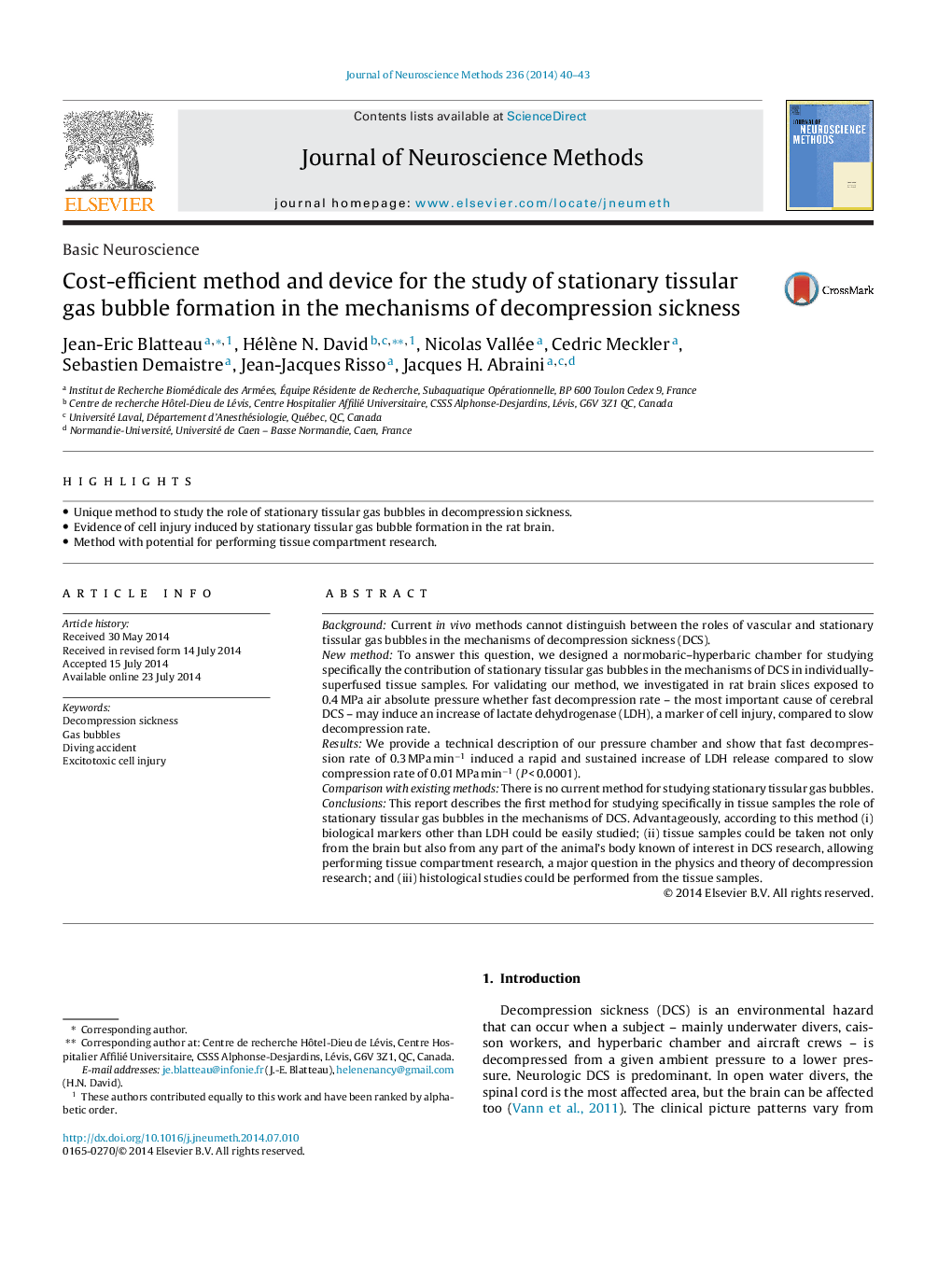| کد مقاله | کد نشریه | سال انتشار | مقاله انگلیسی | نسخه تمام متن |
|---|---|---|---|---|
| 6268571 | 1614633 | 2014 | 4 صفحه PDF | دانلود رایگان |
- Unique method to study the role of stationary tissular gas bubbles in decompression sickness.
- Evidence of cell injury induced by stationary tissular gas bubble formation in the rat brain.
- Method with potential for performing tissue compartment research.
BackgroundCurrent in vivo methods cannot distinguish between the roles of vascular and stationary tissular gas bubbles in the mechanisms of decompression sickness (DCS).New methodTo answer this question, we designed a normobaric-hyperbaric chamber for studying specifically the contribution of stationary tissular gas bubbles in the mechanisms of DCS in individually-superfused tissue samples. For validating our method, we investigated in rat brain slices exposed to 0.4 MPa air absolute pressure whether fast decompression rate - the most important cause of cerebral DCS - may induce an increase of lactate dehydrogenase (LDH), a marker of cell injury, compared to slow decompression rate.ResultsWe provide a technical description of our pressure chamber and show that fast decompression rate of 0.3 MPa minâ1 induced a rapid and sustained increase of LDH release compared to slow compression rate of 0.01 MPa minâ1 (P < 0.0001).Comparison with existing methodsThere is no current method for studying stationary tissular gas bubbles.ConclusionsThis report describes the first method for studying specifically in tissue samples the role of stationary tissular gas bubbles in the mechanisms of DCS. Advantageously, according to this method (i) biological markers other than LDH could be easily studied; (ii) tissue samples could be taken not only from the brain but also from any part of the animal's body known of interest in DCS research, allowing performing tissue compartment research, a major question in the physics and theory of decompression research; and (iii) histological studies could be performed from the tissue samples.
Journal: Journal of Neuroscience Methods - Volume 236, 30 October 2014, Pages 40-43
